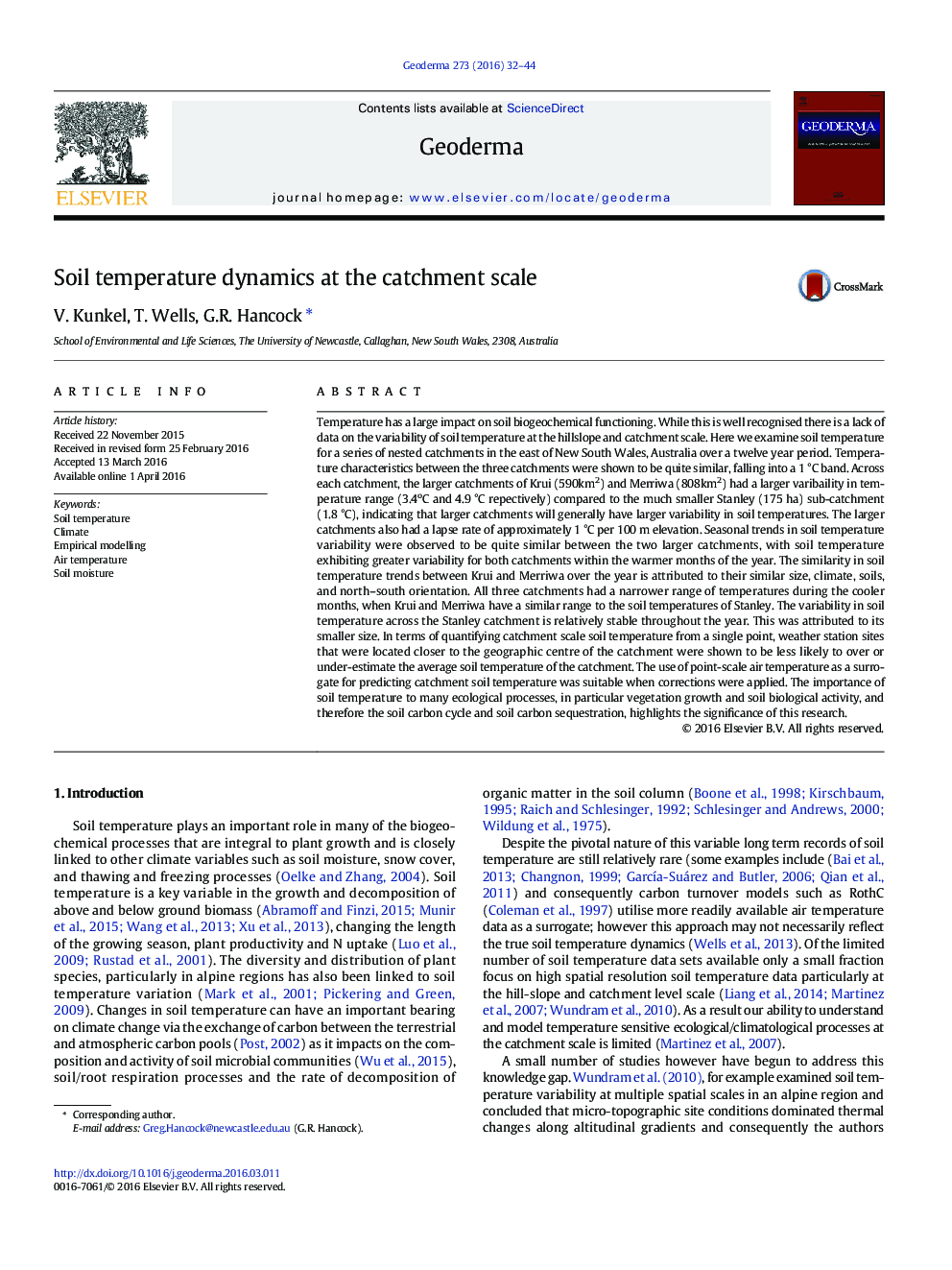| کد مقاله | کد نشریه | سال انتشار | مقاله انگلیسی | نسخه تمام متن |
|---|---|---|---|---|
| 6408333 | 1629444 | 2016 | 13 صفحه PDF | دانلود رایگان |
- Soil temperature was measured across three different catchments of different sizes for 12Â years.
- Temperature characteristics were similar between catchments.
- Outside sites could be used to predict catchment soil temperature.
- Air temperature can predict soil temperature when corrections were applied.
Temperature has a large impact on soil biogeochemical functioning. While this is well recognised there is a lack of data on the variability of soil temperature at the hillslope and catchment scale. Here we examine soil temperature for a series of nested catchments in the east of New South Wales, Australia over a twelve year period. Temperature characteristics between the three catchments were shown to be quite similar, falling into a 1 °C band. Across each catchment, the larger catchments of Krui (590km2) and Merriwa (808km2) had a larger varibaility in temperature range (3.4oC and 4.9 °C repectively) compared to the much smaller Stanley (175 ha) sub-catchment (1.8 °C), indicating that larger catchments will generally have larger variability in soil temperatures. The larger catchments also had a lapse rate of approximately 1 °C per 100 m elevation. Seasonal trends in soil temperature variability were observed to be quite similar between the two larger catchments, with soil temperature exhibiting greater variability for both catchments within the warmer months of the year. The similarity in soil temperature trends between Krui and Merriwa over the year is attributed to their similar size, climate, soils, and north-south orientation. All three catchments had a narrower range of temperatures during the cooler months, when Krui and Merriwa have a similar range to the soil temperatures of Stanley. The variability in soil temperature across the Stanley catchment is relatively stable throughout the year. This was attributed to its smaller size. In terms of quantifying catchment scale soil temperature from a single point, weather station sites that were located closer to the geographic centre of the catchment were shown to be less likely to over or under-estimate the average soil temperature of the catchment. The use of point-scale air temperature as a surrogate for predicting catchment soil temperature was suitable when corrections were applied. The importance of soil temperature to many ecological processes, in particular vegetation growth and soil biological activity, and therefore the soil carbon cycle and soil carbon sequestration, highlights the significance of this research.
Journal: Geoderma - Volume 273, 1 July 2016, Pages 32-44
